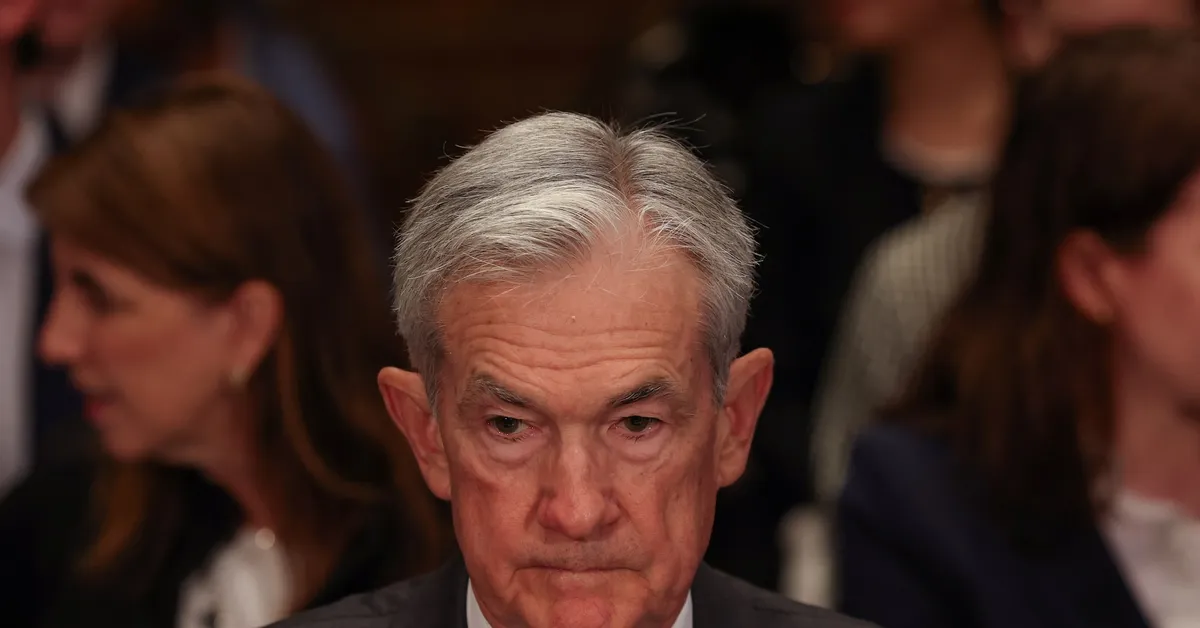
On June 25, during a session with a U.S. Senate panel, Federal Reserve Chair Jerome Powell expressed his concerns regarding the potential implications of the Trump administration's tariff plans. He indicated that while these tariffs might lead to a temporary increase in prices, there exists a significant risk of causing more persistent inflation. This uncertainty prompts the central bank to tread cautiously when considering further interest rate cuts.
Powell elaborated on the economic theory suggesting that tariffs typically result in a one-time shock to prices. However, he emphasized that this theory is not an absolute rule. The Federal Reserve's current approach is to gather more data regarding the ultimate levels of tariffs and how they affect pricing, alongside public expectations about inflation. “If it comes in quickly and it is over and done, then yes, very likely it is a one-time thing that won't lead to more persistent inflation,” Powell stated. “But it is a risk we feel. As the people who are supposed to keep stable prices, we need to manage that risk,” he added.
The repercussions of tariffs can vary significantly, and Powell conveyed the importance of approaching this issue with caution. He warned that any mistakes made in policy could have long-lasting effects on the economy. Despite expectations among Fed officials to cut interest rates this year, the timing remains uncertain as they await impending trade deadlines and seek greater clarity on the tariffs' scope and their impact on prices and economic growth.
President Donald Trump has been vocal about his desire for the Fed to enact immediate rate cuts. This sentiment was echoed by Republican lawmakers during recent Senate hearings, where they pressed Powell on the cautious stance of the Fed regarding lowering borrowing costs. Ohio Republican Senator Bernie Moreno criticized Powell, stating that he appears to be formulating monetary policy through a political lens due to his aversion to tariffs. Moreno pointed out the electoral legitimacy of lawmakers compared to Powell's appointment, which occurred during Trump’s first term.
In response to questions about the current economic climate, Powell noted that the Fed does not have a contemporary example of tariff increases on the scale that Trump is proposing. Previous tariffs during the Trump administration were significantly lower and enacted in a period of low inflation. Currently, inflation has consistently exceeded the Fed's 2% target for roughly four years, raising concerns that a new surge could lead to more sustained price hikes. “This is different,” Powell remarked, stressing the absence of modern precedents and the need for humility in their estimates.
Despite recent moderation in inflation, the Fed anticipates that rising import taxes will likely contribute to increased inflation starting this summer. Powell reassured House lawmakers that the Fed would not feel comfortable proceeding with rate cuts until there are clear indicators of rising prices and whether this trend is becoming more entrenched. He mentioned, “We should start to see this over the summer, in the June number and the July number,” indicating that these figures would be crucial for future policy decisions.
As tariffs on certain goods have already increased, attention is now focused on the looming July 9 deadline for additional levies affecting a wide range of countries. Analysts are uncertain whether the Trump administration will adhere to a 10% baseline tariff or impose more aggressive measures. The Fed has maintained its benchmark interest rate in the range of 4.25% to 4.5% since December. Recent economic projections from the Fed indicate that policymakers expect to reduce the benchmark overnight rate by half a percentage point by year-end. However, there is a notable divide among officials regarding the severity of the inflation risk, with some policymakers advocating for no rate cuts this year.
Currently, investors anticipate that the Fed will cut rates during its September and December meetings while keeping rates steady at the upcoming meeting scheduled for July 29-30. As uncertainties surrounding tariffs and their economic impact continue to unfold, the Federal Reserve remains vigilant in monitoring the situation and adapting its policies accordingly.